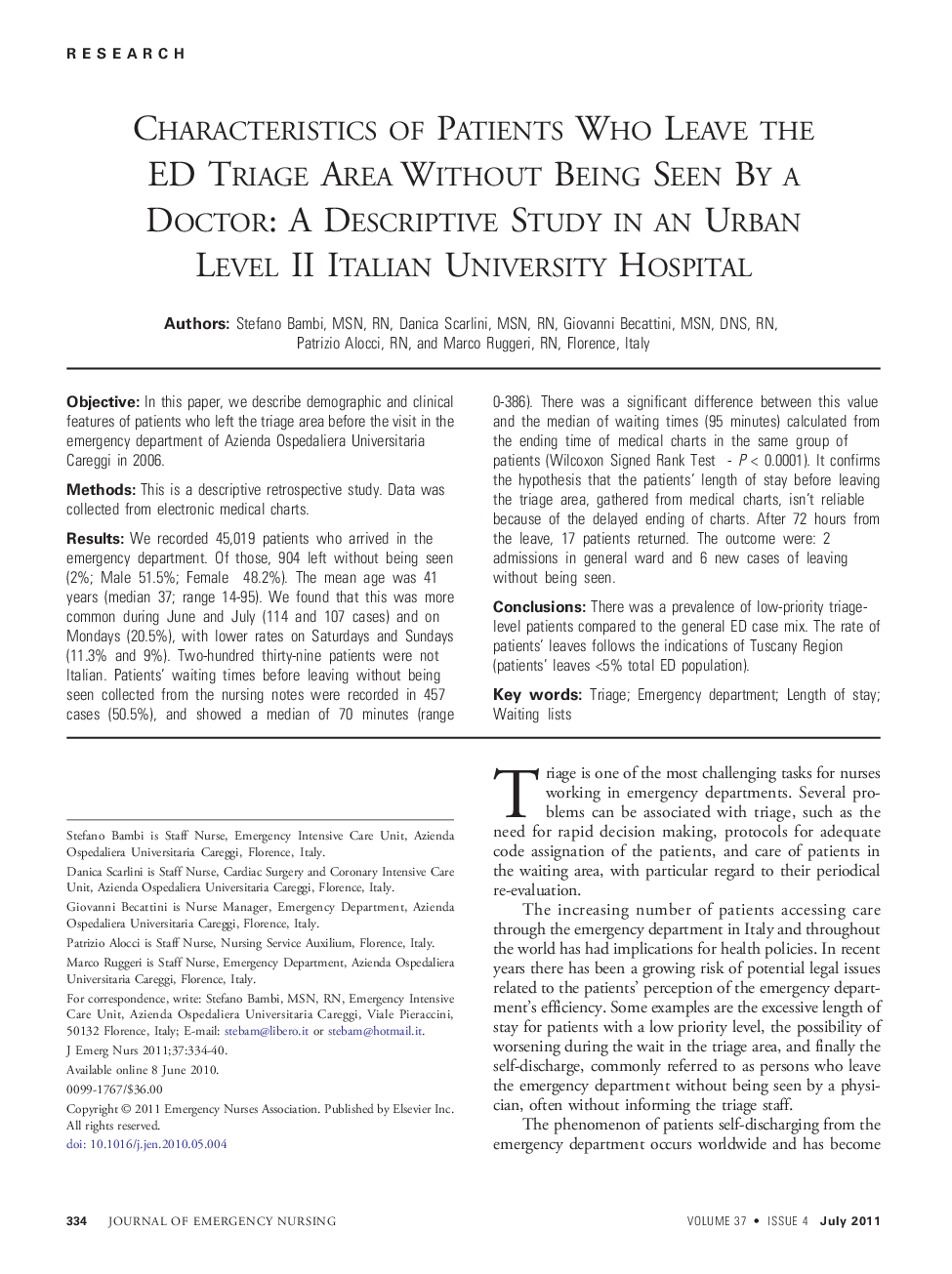| Article ID | Journal | Published Year | Pages | File Type |
|---|---|---|---|---|
| 2610410 | Journal of Emergency Nursing | 2011 | 7 Pages |
ObjectiveIn this paper, we describe demographic and clinical features of patients who left the triage area before the visit in the emergency department of Azienda Ospedaliera Universitaria Careggi in 2006.MethodsThis is a descriptive retrospective study. Data was collected from electronic medical charts.ResultsWe recorded 45,019 patients who arrived in the emergency department. Of those, 904 left without being seen (2%; Male 51.5%; Female 48.2%). The mean age was 41 years (median 37; range 14-95). We found that this was more common during June and July (114 and 107 cases) and on Mondays (20.5%), with lower rates on Saturdays and Sundays (11.3% and 9%). Two-hundred thirty-nine patients were not Italian. Patients' waiting times before leaving without being seen collected from the nursing notes were recorded in 457 cases (50.5%), and showed a median of 70 minutes (range 0-386). There was a significant difference between this value and the median of waiting times (95 minutes) calculated from the ending time of medical charts in the same group of patients (Wilcoxon Signed Rank Test - P < 0.0001). It confirms the hypothesis that the patients' length of stay before leaving the triage area, gathered from medical charts, isn't reliable because of the delayed ending of charts. After 72 hours from the leave, 17 patients returned. The outcome were: 2 admissions in general ward and 6 new cases of leaving without being seen.ConclusionsThere was a prevalence of low-priority triage-level patients compared to the general ED case mix. The rate of patients' leaves follows the indications of Tuscany Region (patients' leaves <5% total ED population).
